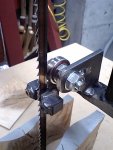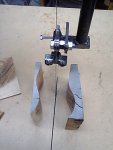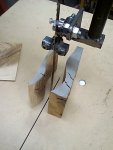Well, I have to say, I had a good day, and a bad day, and finished with a sort of good evening..............

I finished up the tension/tracking adjuster, rock solid, and built to last, works great!!!

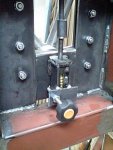
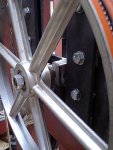
But then I got a little crazy trying to get a 1/2" blade to stay on the wheels, I tried everything, tweaked everything I can think of.............

The wheels are square to each other, running straight and true, are deal coplanar and still, the darn blade would NOT stay on the freaking saw

I've checked and rechecked EVERYTHING I can think of...........


I was about to give up and go get a case of cold beer from the L shop and frogetaboutit............

Well, as a last ditch effort, I tried another blade, a thin one................ yep, worked MUCH better.
I've come to the conclusion that the problem is the wheels and tires.
The wheel are dead flat on the rim, the place where the tires go, and being them GOOD urethane tires, they are also dead flat, and not crownable


rown them, I'm convinced that this will solve the problem.................
Here is some sawing in some pine.....
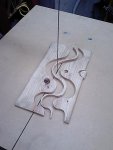
No blade guides top or bottom, or blade bearings at all.
Not too shabby, I think



 but just as I tried to post it our IPO went belly up and was down for several hours and I lost the whole thing.
but just as I tried to post it our IPO went belly up and was down for several hours and I lost the whole thing.









